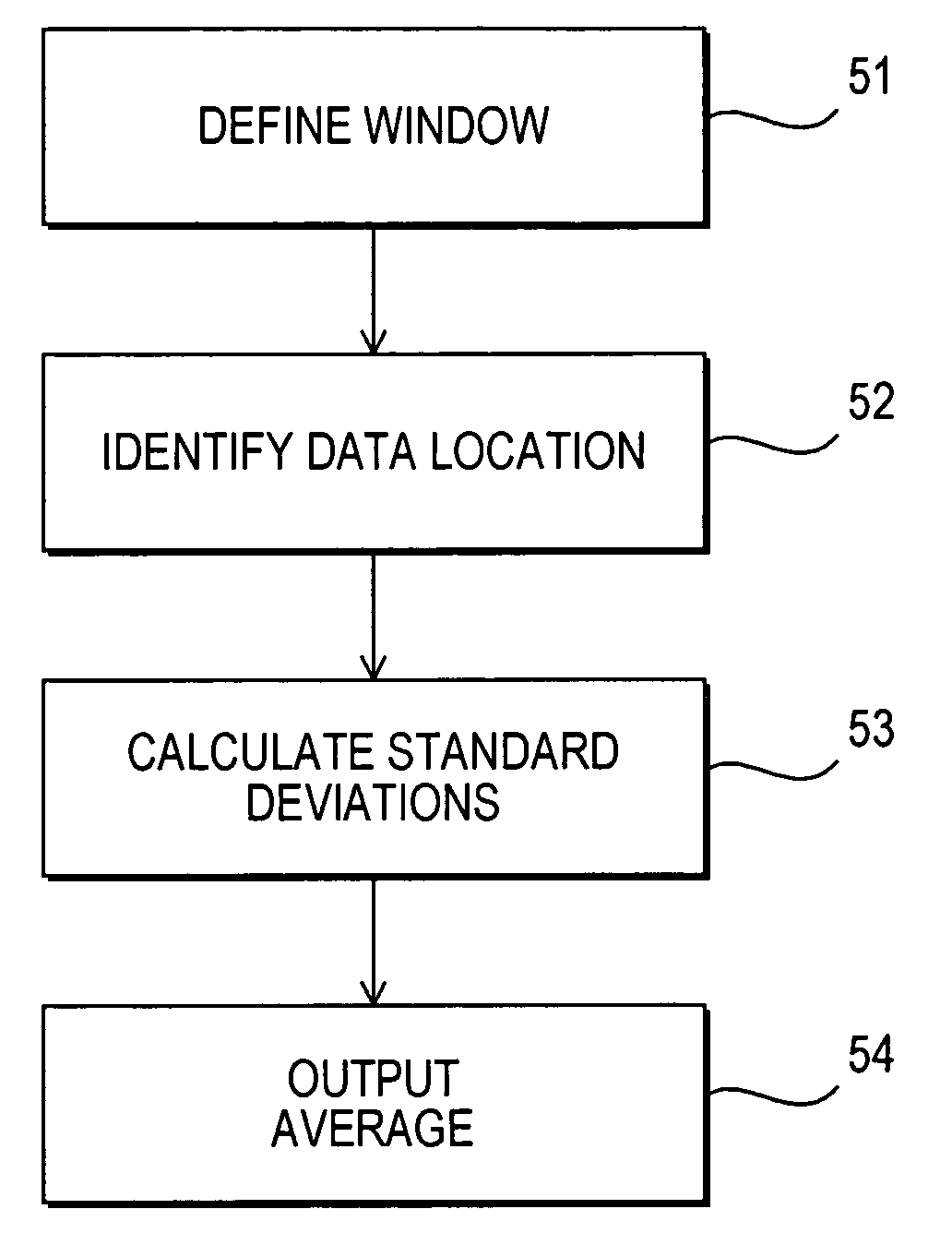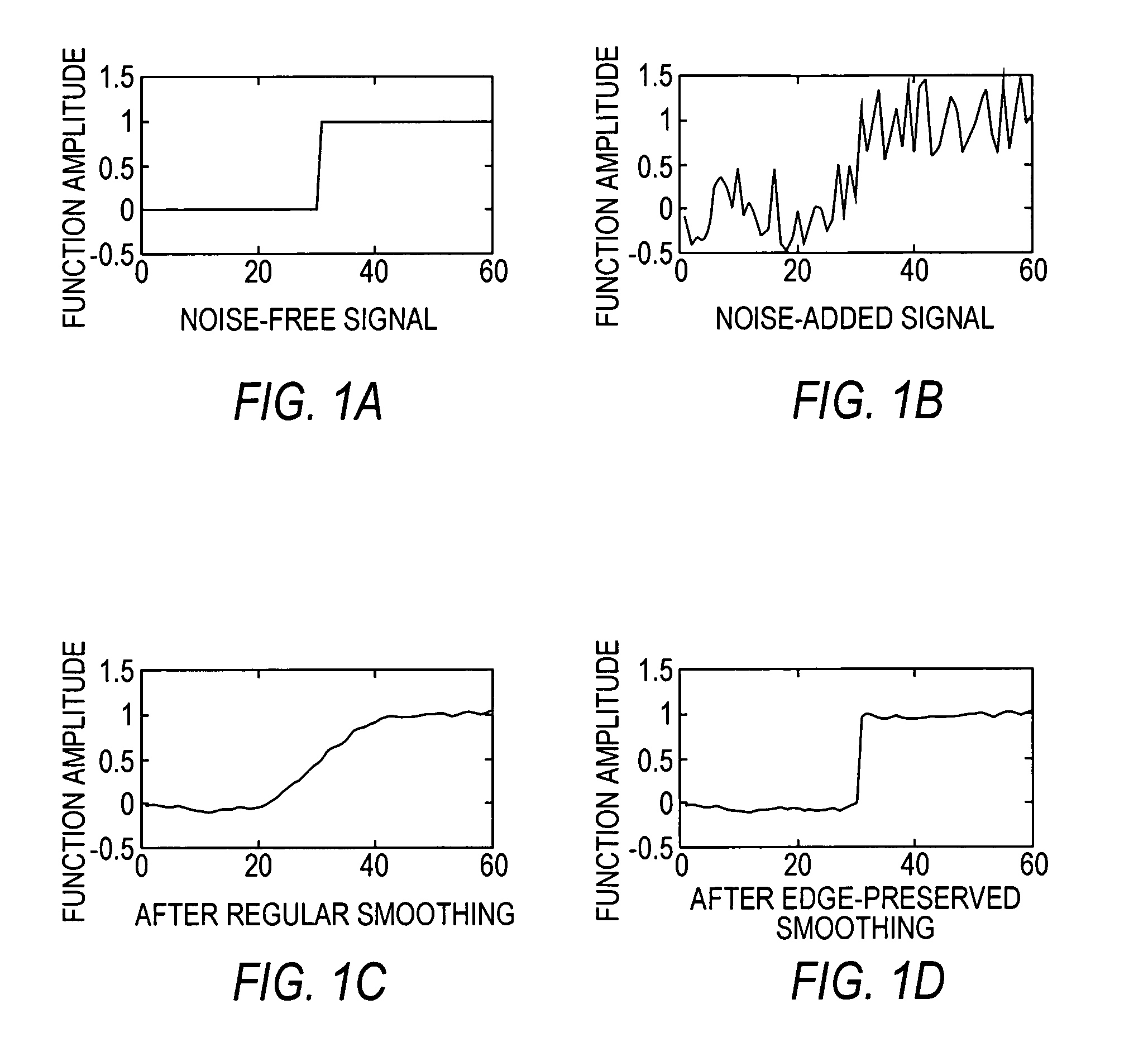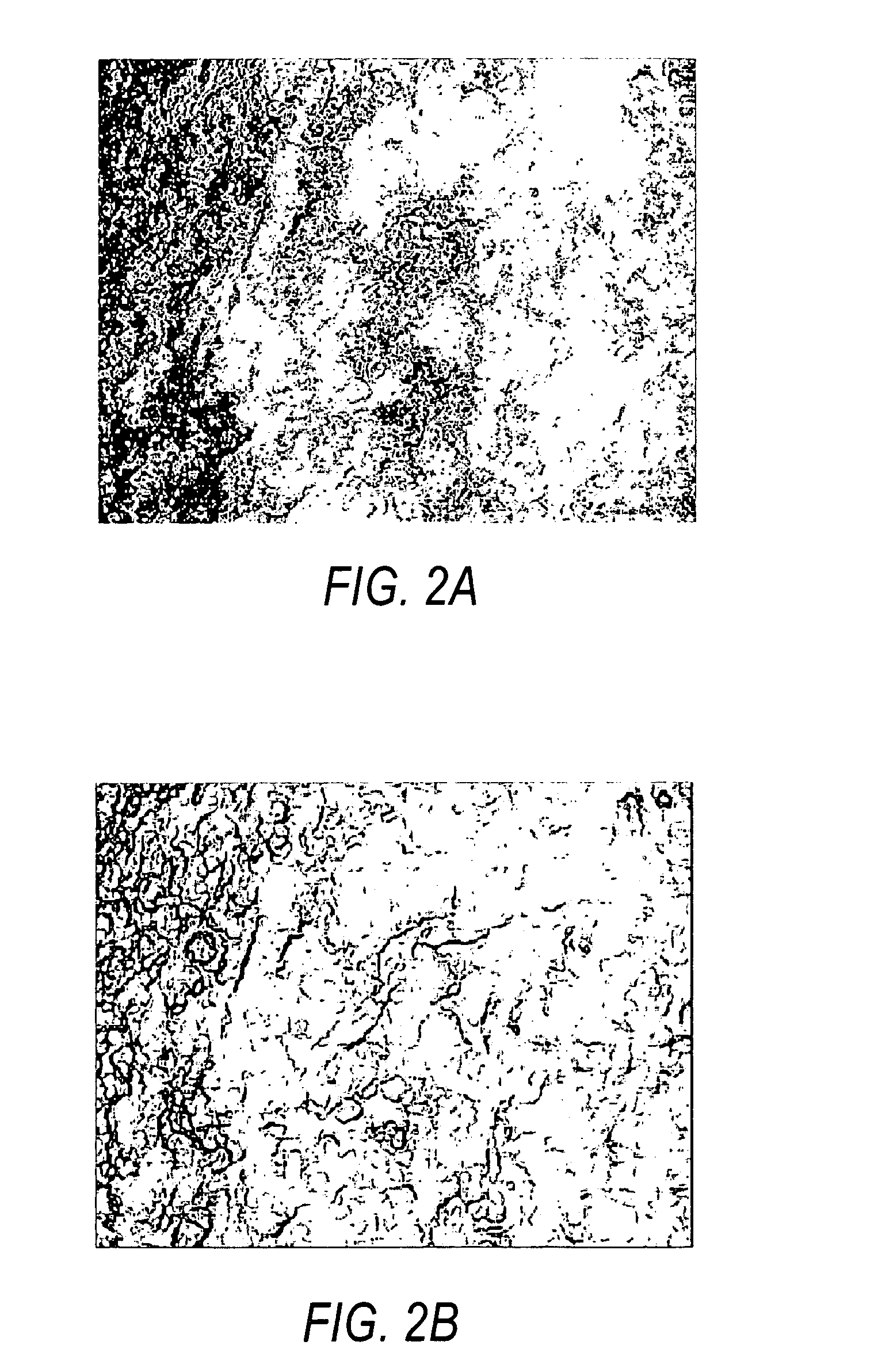Edge preserving smoothing method
a smoothing method and edge preservation technology, applied in the field of processing noisy signals, can solve the problems of insufficient noise removal method, blurred sharp edges, complicated reflection data,
- Summary
- Abstract
- Description
- Claims
- Application Information
AI Technical Summary
Benefits of technology
Problems solved by technology
Method used
Image
Examples
Embodiment Construction
[0021]In concept, the method of the present invention looks for the most homogeneous neighborhood around each output point in a 3D seismic cube, and then give each point the average value of the selected neighborhood.
[0022]FIGS. 1A–1D illustrate this concept using a simple one-dimensional (1-D) step function. FIG. 1A displays a noise-free step function. FIG. 1B shows the same step function after random noise is added. Applying a conventional 21-point smoothing filter to FIG. 1B yields the result shown in FIG. 1C. It will be seen that the random noise has been reduced, but at the same time the sharp step has been severely altered.
[0023]FIG. 1D illustrates the result of applying a 21-point smoothing operator in accordance with the present invention to FIG. 1B. In FIG. 1D, it is clear that the sharp edge has been preserved while the noise has been reduced.
[0024]While the smoothing operator in accordance with the present invention can be implemented for any desired number of points, for...
PUM
 Login to View More
Login to View More Abstract
Description
Claims
Application Information
 Login to View More
Login to View More - R&D
- Intellectual Property
- Life Sciences
- Materials
- Tech Scout
- Unparalleled Data Quality
- Higher Quality Content
- 60% Fewer Hallucinations
Browse by: Latest US Patents, China's latest patents, Technical Efficacy Thesaurus, Application Domain, Technology Topic, Popular Technical Reports.
© 2025 PatSnap. All rights reserved.Legal|Privacy policy|Modern Slavery Act Transparency Statement|Sitemap|About US| Contact US: help@patsnap.com



